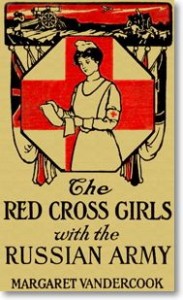Continuing our diversions for summer 2014 , we nonetheless remain interested in gender inequality and below take the opportunity to look at interesting initiatives designed to boost the engagement and equality of status for women in technology.
Girls in Tech Paris 2014 – European Lady Pitch Night
Despite the rather off message phrasing of the translated title, if you are a female technologist, active in a European based start-up and have been operational in your company or project for between six and thirty six months, then you could be n your way to Paris for this Girls in Tech Paris/Orange sponsored annual event on the 23rd September.
Applications have been extended and are closing on July 23rd, so you still have time to get your bid in. All finalists will receive tickets to Europe’s top technology conferences, including Dublin Le Web, LeWeb and Europas. Your submission will be tested, in English, in front of a jury, after a telephone interview to complete the selection process.
![]() You can read more about the competition by visiting the Girls in Tech London web pages here.
You can read more about the competition by visiting the Girls in Tech London web pages here.
![]() You can see and complete the on-line application form here.
You can see and complete the on-line application form here.
If you are a female technologist intent on a career in the sector, despite some of the reservations below, we think Girls in Tech London is a great resource. Their pages offer insights into fifteen UK Tech Women to watch in 2014. Great role models and great examples of women driven technology enterprise. See more here…
Microsoft – supporting change in the gender balance
The Seattle giant recently, in June 2014, held a number of sessions at its Cambridge Research building in our region, designed to interest and promote female engagement with technology and software.
It is widely recognised that women entering the sector are faced by a massive gender imbalance, with attitudes to women still in transition in the industry. However, keen to not lose good minds and the opportunity for original research, Microsoft held a workshop on Tips and Tools for Scientific Research Success – ‘…aimed to educate attendees about Microsoft research tools, equip them with advice from experienced researchers about the opportunities of being an early-career researcher, and inspire them with examples from Microsoft Research that show the potential of computer science to change the world’.
Although 55% of enrolments in higher education are for women, data from HESA in 2013 shows, fewer than 3% of graduates were in computer science. Of that cohort only 17% were women.
Attendees at the Microsoft event in Cambridge looked at issues around cloud computing, research tools that Microsoft currently offers and how attendees might master Excel and WordPress in order to deliver and publish their research.
The attendees also looked at Chronozoom and Microsoft’s WorldWide Telescope. If you are interested in history and star gazing, these are great tools to find out more about your subject at any level, even if you are not a research scientist .
Microsoft have indicated that another ‘women in research ‘workshop is on the way in the Autumn of 2014. To request information and see the original Microsoft article about the summer event go to the Microsoft web page here…
Coder Girls and Feminist Hacker Spaces
Another solution to the gender imbalance in ‘tech’ is to build a steadfast Bailey castle, and exclude the male majority from it. In San Francisco, the Double Union feminist hacker space does just that.
Just using the word castle would, we expect, bring us into conflict with the collective’s base assumptions. However, an overwhelming belief in open-ness and collaboration is, we recognise, trumped by the assessment that the problems for women in ‘tech’ industry are so large, that barriers need to be erected to allow a comfortable, clear space for reflection and creativity.
Fast Company recently published a profile of the feminist work space and of Amelia Greenhall, the spaces Executive Director. To sign up for Double Union women must evidence that they share a similar world view as other centre residents.
A key ‘counter-text’ for Unioner’s is Sheryl Sandberg’s Lean In. The Union holds that it is the tech industry that needs to change, not the women in it. Sandberg, Chief Operating Officer of Facebook, drove a movement forward. You can see the Lean In web pages here. But the more ardent, Double Union feminist approach, and the data, argues that for most women in technology, the barriers are not falling. Despite gentler feminist movements, girls who code projects and the well known female faces in the industry – tokenism at best the Unioner’s would probably argue.
They present a cogent argument. Google’s payroll includes only 17% of employees who are women, whilst Facebook offers workspaces and careers to only 15% of its staffing levels to women. Not much evidence of internal change in these major sector players, we would argue.
Perhaps the solution is the rainbow coalition approach? The ardent, exclusive feminists and the gentler, inclusive mainstream corporate sensibility will together reshape the face of ‘tech’ in the future, for all women? We hope so.
We read and were stirred by the Fast Company article. Written by a female journalist it none the less includes a description of what the Executive Director of the feminist space was wearing. We can’t remember the last time we read an interview with Bill Gates which featured his wardrobe?
(Are there any similar feminist community initiatives for ‘tech’ in the Eastern Region? We can’t think of any. If you know of one, let us know. We’ll feature it on our journal pages and continue the conversation…Ed).










